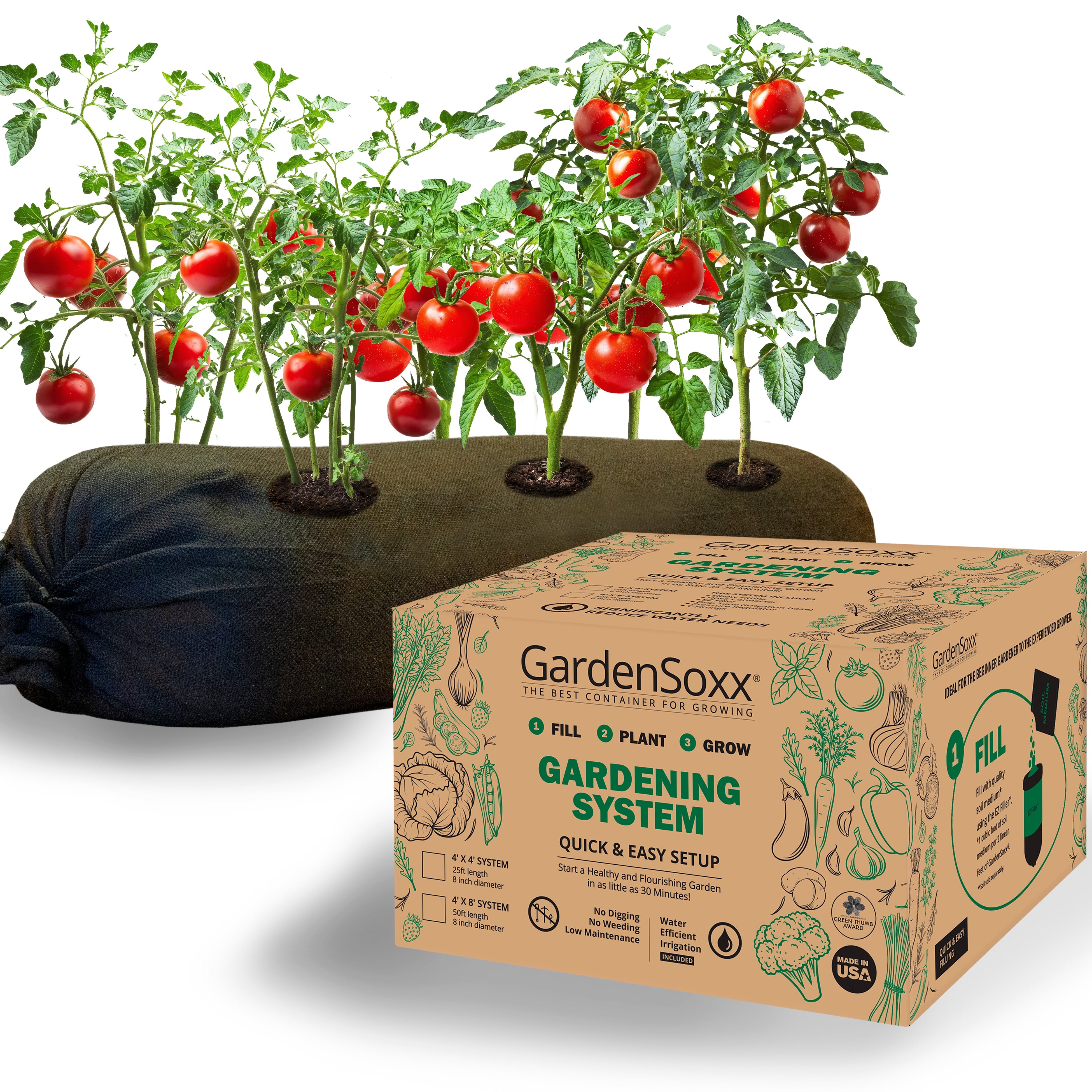Pumpkin
For those curious about how to grow pumpkins, this quintessential fall crop is native to North America and comes in a wide range of sizes and colors. While pumpkins are often used for fall decor and symbols of Halloween traditions, they make a delicious and healthy addition to your home garden that can be used for both savory and sweet applications.
Soups, pies, smoothies, or as a simple roasted side dish - low-calorie pumpkins have virtually no fat and are high in many essential vitamins and nutrients. Their seeds are also packed full of flavor and nutrition, and collecting them for roasting from the squishy inner pulp makes for a fun sensory activity for kids.

Growing pumpkin in GardenSoxx® | Plant Family: Curcurbitaceae
Different Varieties of Pumpkin
While this crop may seem more fitted for a larger garden, there are different varieties of pumpkin that work very well in compact spaces. Gardeners looking to save space can try trellising pumpkins, providing adequate support for the fruits as they grow. While it may be easier to find some of the most common varieties as seedlings in garden centers, there are also some unusual pumpkin varieties you may want to explore and try growing as a fun experiment.
A fast-growing pumpkin variety that will leave you with a harvest of small and brightly colored fruit in as little as 90 days is the Jack-Be-Little pumpkin variety. Kids will love growing and decorating these mini pumpkins and parents will enjoy incorporating them into delicious fall recipes.
Other small pumpkin varieties to try in your home garden would be the white Baby Boo pumpkin or the slightly larger Casperita. Both produce an abundance of creamy-white fruits which mature in about 90-100 days.
A popular favorite of the many green pumpkin varieties is the Marina Di Chioggia - an heirloom pumpkin plant that produces fruit with a rich and sweet taste, and a uniquely bumpy, dark green outer skin. This plant may require a bit more room in the garden to spread, but the high-quality fruits it produces will be well worth the extra space!
Smaller gardens can also benefit from planting bush pumpkin varieties like the Cherokee, a classic orange pumpkin that offers high yields in a compact bush. Taking a little over 100 days to mature, this plant will provide large, consistent fruit that weighs 6-8 pounds at maturity.
Among the more unique pumpkin varieties is an ornamental Porcelain Doll - a beautiful pink, ribbed pumpkin with sweet-tasting flesh perfect for fall pie-making. This variety is also resistant to more common pumpkin diseases such as powdery mildew.
Nutritional Information For Pumpkin
Nutritional Facts - per 100/g
| Nutrient | Amount | % Daily Value |
|---|---|---|
| Calories | 26 | - |
| Total Fat | 0.1 g | - |
| Sodium | 1 mg | - |
| Potassium | 340 mg | - |
| Dietary Fiber | 0.5 g | - |
| Sugar | 2.8 g | - |
| Protein | 1 g | - |
| Vitamin C | - | 15% |
| Iron | - | 4% |
| Vitamin B6 | - | 5% |
| Magnesium | - | 3% |
| Calcium | - | 2% |
How to Grow Pumpkin in Your GardenSoxx®
Pumpkins take time to mature, especially in colder growing zones. However, they need the sun and summer heat to grow well. They should be planted well after any frost risk has passed, and once the soil has sufficiently warmed. If you are growing them in a zone with a short summer season, starting seedlings indoors and hardening them off at around 3 inches tall before planting outside is your best bet.
Pumpkin Seed to Harvest Time: 100-120 days depending on the variety

How to Harvest Pumpkin
Pumpkin sizes vary dramatically; while some specific types will only grow to a certain size, most common varieties can offer quite a range of size options at maturity. The best way to know when a pumpkin is ready to pick is, therefore, not the size, but the color and feel of the pumpkin. Once the stem has hardened, and the pumpkin rind is hard to the touch, the pumpkin should sound hollow when tapped. These signs will tell you that it is ready to harvest. Leaving a few inches of stem, cut the pumpkin off the vine with a pair of pruners or a sharp knife.


















































